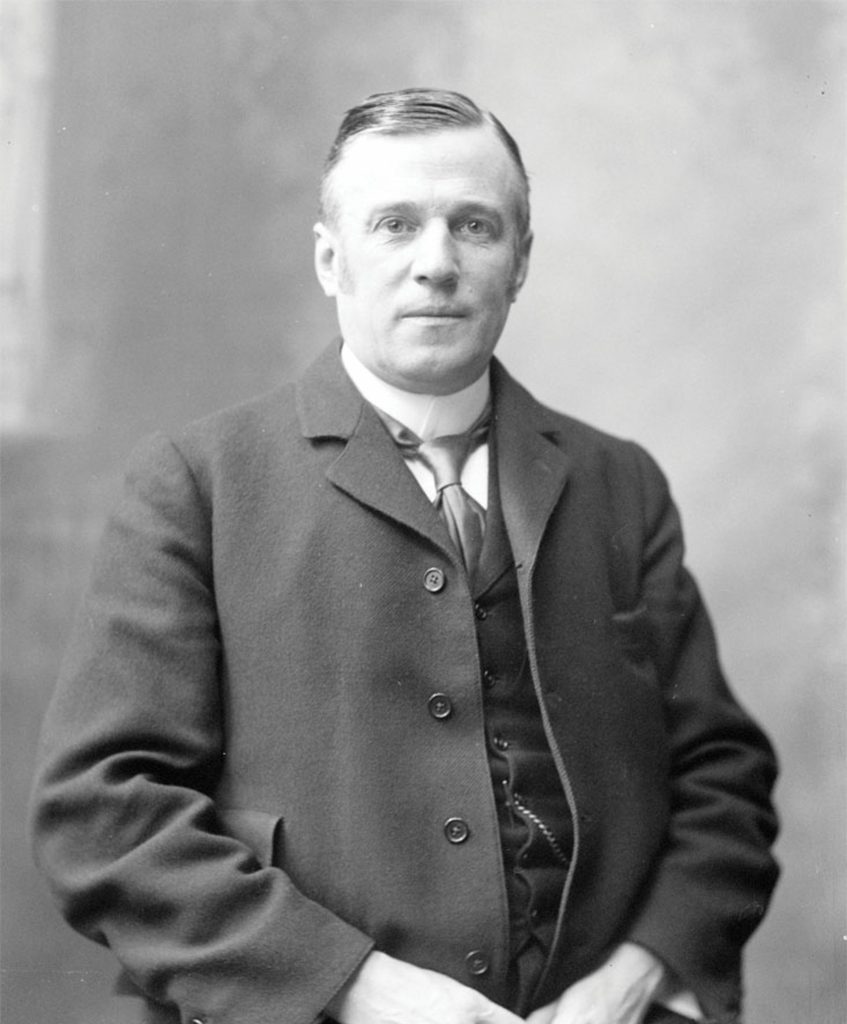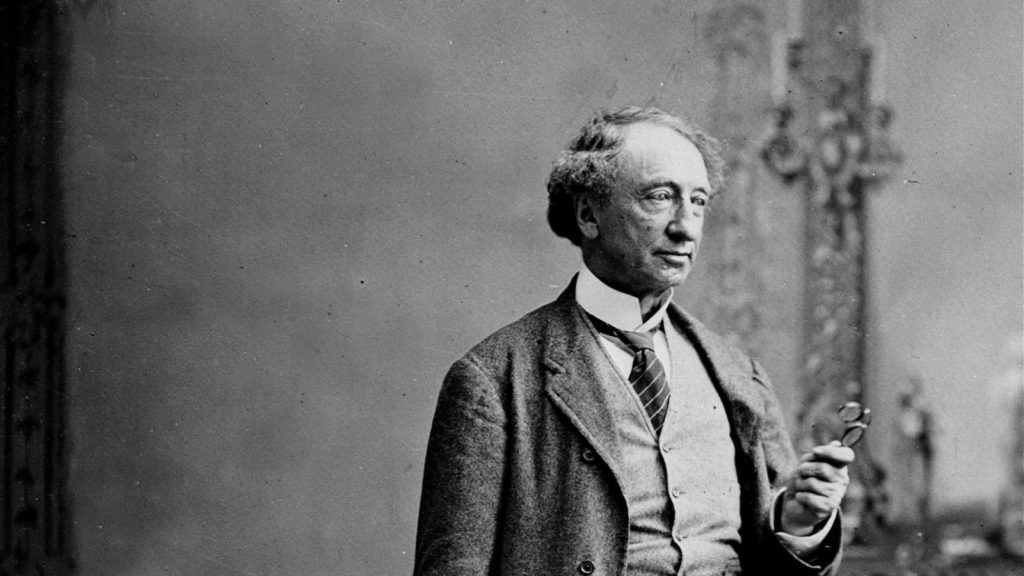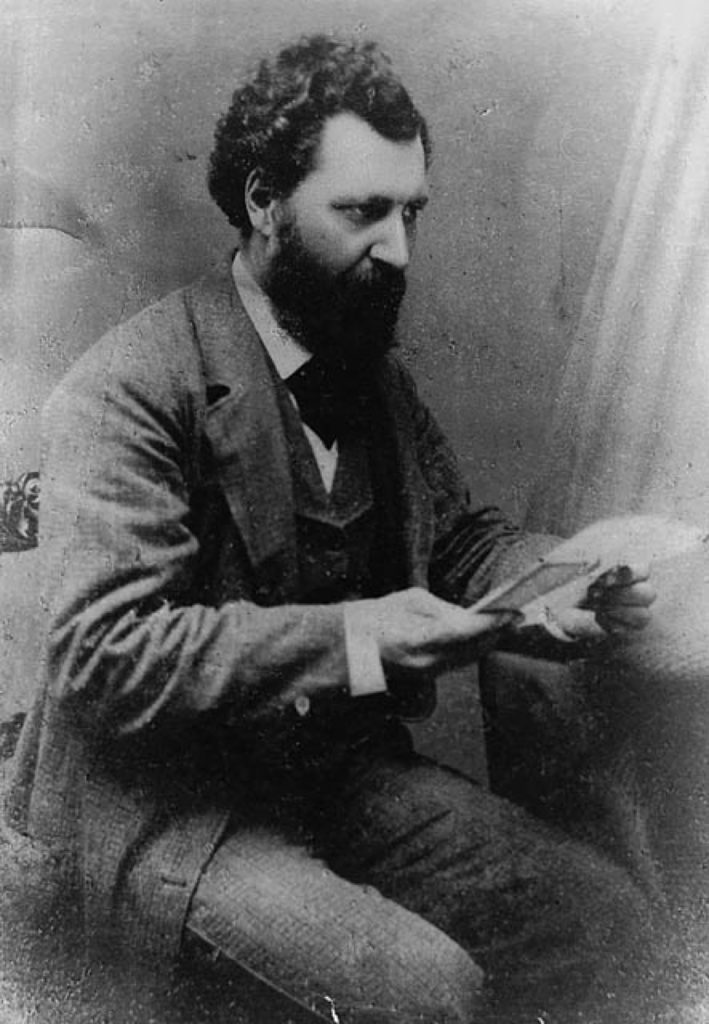Working Holidays: Political Preoccupations and Crises at Villa Les Rochers
Sir Joseph Pope, Prime Minister Sir John A. Macdonald’s private secretary, wrote in his memoirs that during their time at Villa Les Rochers, Sir John A. would work every morning and sometimes rest in the afternoons.

Sir Joseph Pope, date unknown. Sir Joseph was private secretary to Sir John A. Macdonald for many years
Sir John A. spent his time reading and signing documents as well as attending to correspondence; writing letters, sending telegrams and dealing with pressing political issues.
The first political crisis that occurred during Sir John A. Macdonald’s time spent in St. Patrick was the Pacific Scandal of 1873 (the first political scandal since the creation of Confederation).
The Prime Minister was hoping that at Villa Les Rochers in St. Patrick he would escape the media attention in the wake of the disaster, which had recently caused him to lose the election.
Instead, Sir John A. “disappeared” for three days, causing untold anxiety for Lady Agnes and others. Rumours abounded and newspaper writers speculated wildly, one claiming he had committed suicide by jumping off the wharf at Rivière-du-Loup.
Sir John A. Macdonald returned to Villa Les Rochers eventually, confessing later to Lord Dufferin that he’d taken an early train to Levis to embark on a drinking binge.
Another crisis for Sir John A. was unfolding in the summer of 1885. In the Rouge River Valley, for two decades on and off, Métis leader Louis Riel had led a resistance against the encroachment of Canadian settlers on Métis land.
The government sent troops to quell the rebellion, a strategy made possible by the recent advancement of the Canadian Pacific Railway. But when Riel had a British soldier executed, a charge of treason was laid against him on July 6th.
Riel’s trial began in Regina in July. The jury found him guilty, which carried a sentence of death by hanging.
Sir John A. Macdonald called for a cabinet meeting in St. Patrick through a series of telegrams; Sir Joseph Pope arranged for reservations to accommodate the guests from Ottawa.
In late August of 1885 the ministers who met at Villa Les Rochers included Samuel Tilley (Minister of Finance and Receiver General), Sir Hector-Louis Langevin (Minister of Public Works), John Henry Pope (Minister of Agriculture), Mackenzie Bowell, (Minister of Customs), Alexander Campbell (Minister of Justice and Attorney General), and Joseph-Philippe-René-Adolphe Caron (Minister of Militia).
Sir John A. Macdonald and his cabinet members discussed urgent financial needs concerning the railway, and the Louis Riel crisis in Manitoba.
At Villa Les Rochers the motion was passed to advance another 5 million dollars to the Canadian Pacific Railway’s George Stephen and William van Horne. At this meeting, the same ministers also advised Sir John A. to give clemency to Riel. Instead, he would uphold the sentence.



